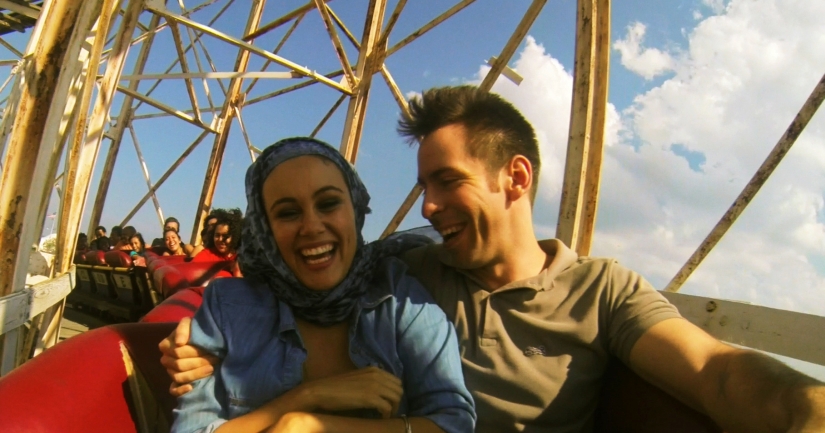There might be a more interesting film in Amira & Sam, the feature-film debut from writer/director Sean Mullin. I say that because there’s the set-up for a fine misfit love story here. Sam (Martin Starr) is an Iraq war vet awkwardly trying to assimilate back into civilian life, Amira (Dina Shihabi) hocks bootleg DVDs of romcoms and has to go into hiding to dodge the law. And, of course, the couple hate each other at first.
Amira & Sam
Director: Sean Mullin
Rating: N/A
Release Date: January 30, 2015
In the best misfit love stories (e.g., Minnie and Moskowitz, Harold and Maude, Punch-Drunk Love), there’s a sense that we’re watching two oddballs against a world that wants them to conform, and Sam and Amira make a fine pair of misfits. They’re economic, social, cultural, and political outsiders, two lost souls in New York living in the outer boroughs; for Sam, it’s outermost Staten Island. During one scene in which the pair try to figure out who’s sleeping on the floor and who’s taking the bed, Starr and Shihabi share such a flirty warmth and natural charm. The apartment’s too small to put up the Walls of Jericho a la It Happened One Night, so the awkward situation forces closeness, and both Sam and Amira counteract the awkwardness by giving in to their proximity.
Yet despite the kookiness of the misfits, Amira & Sam can’t overcome its writing, which forces our heroes and their lives into narrative conformity. The film feels pressed into the mold of other formulaic romcoms, with the story beats, the cliches, and the obviousness conquering the film’s more unique charms. The misfits are demisfitted.
Mullin includes some potent (albeit heavy handed) political material regarding veterans in civilian life. While Sam hasn’t suffered any physical or psychological trauma, he seems alienated, which may have more to do with Starr’s deadpan performance. Sam’s cousin, Charlie (Paul Wesley), runs a hedge fund and thinks of Sam’s service more like a resume item and a way to lure in investors rather than an actual experience with existential repercussions. Income inequality plays into this part of the story, with Sam having to make choices that may compromise his character despite the financial advantages. It’s the haves exploiting the have-nots and the have-nots sacrificing their lives so that the haves can be unrepentant douchebags. Perhaps anachronistically (the film takes place in 2008, three years before Occupy), Mullin includes mentions of the 1% in his screenplay to hammer the points even further.
While Sam’s outsiderness is given a kind of roundness through bland aspirations and an upstanding moral code, Amira feels thin as a character. The film is more Sam’s and he has more agency, and I can easily recount his internal life. But beyond a kind of spunkiness, rebellion, and general listlessness, I couldn’t really grasp the hopes and dreams that Amira might have, or what she might have wanted, or how these aspirations became waylaid, or even why she finds such a connection to romcoms. It’s nothing against Shihabi since she has an ease on screen, but more about Amira seeming like an accessory to Sam’s story who’s along for the ride rather than a character fully considered. There’s the hint of fascinating cultural contradiction about her since she wears a revealing outfit with a hijab, and yet it’s never explored beyond off-hand remarks by side characters.
At one point of Amira & Sam, the couple sits by the Verrazano Bridge, like a callback to Woody Allen and Diane Keaton at the Queensboro Bridge in Manhattan. Maybe Amira recognizes the film reference, but she didn’t say anything. Maybe she recognized that from that point on, their lives were starting to become a less interesting sort of romance. I wish she’d said something and done something about it.


